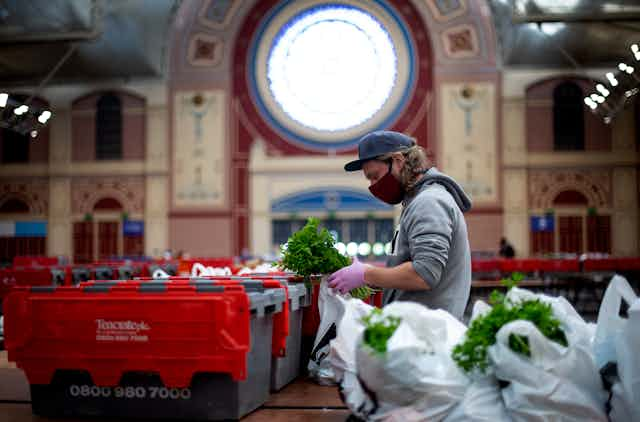Coronavirus has demonstrated that in times of emergency, ordinary citizens are often the people who step up first to help. As the crisis hit, across the UK, people quickly joined community mutual aid efforts. A mass mobilisation of volunteers to support the NHS took place. There were remarkable fundraising efforts and frontline work.
In the suspended animation of lockdown, everyone has been adjusting to new roles and routines. This includes rapidly improvised new relationships between voluntary action and the state - a new “partnership of necessity”. This is reminiscent of the 1940s when charities mobilised in response to the upheaval of the second world war.
As part of its support for the coronavirus recovery, the UK government has pledged a £750 million rescue package which will fund grants for charities. Around half of this will be directed towards supporting the work of smaller, local organisations at a time when demands on them are particularly intense. Even though the package has rightly been criticised as insufficient, never before have such sums been earmarked for the voluntary sector.
Meanwhile, the government has worked closely with the Royal Voluntary Service in a call for volunteers to support the NHS in England. The NHS Volunteer Responders scheme now has an army of 750,000 people offering to help support vulnerable people at home, through regular “check in and chat” phone calls and delivering shopping and medicines. The joint work to add voluntary resources to a core public service is worth noting – although the top-down approach has left many volunteers waiting to be deployed.
And at the local level, many voluntary organisations and grassroots community groups are working closely with councils to meet the social welfare needs of the most vulnerable and marginalised people.
In these ways, the state and voluntary action have become more closely aligned during the pandemic. There are some parallels with the 1940s when the voluntary sector worked closely with the government to drive recovery.
The second world war and post-war reconstruction revealed previously hidden social needs and accelerated changes towards state-provided welfare. But post-war austerity meant voluntary action was needed to meet these needs. Taken as a whole, the voluntary movement and the 1945-51 Labour government consolidated a “pragmatic partnership” that overcame initial suspicion on both sides.
A partnership of necessity
However, there is a key difference. The partnership back then was building on government support for grassroots community projects during the 1930s depression. It was part of a growing consensus on the creation of a cradle-to-grave welfare safety net, in which voluntary organisations would still play their part.
In 2020, however, the mobilisation follows on from a period characterised by a much more strained relationship between the UK government and the voluntary sector. During the 2010s, the UK government made a big show of providing new opportunities for the voluntary sector via the “big society” agenda. This was supposed to empower citizens and wider civil society to take action to meet local needs, but became mired in scepticism. People saw the emphasis on voluntary action as a cover for austerity – a sign that the government hoped it could cut public funding and others would step in to fill the gaps left behind. Meanwhile, there were efforts to restrict the campaigning role of voluntary organisations. The state and charities have been working together in practice, but the relationship could more realistically be described as an “antagonistic collaboration”.

Listen to Recovery, a series from The Anthill Podcast, to hear more about how the world recovered from past crises, including an episode on the recovery after the second world war in Britain.
The coronavirus “partnership of necessity” comes out of a decade of worsening relations between the state and voluntary action. During the pandemic, charities have been using social media campaigns and the hashtag #NeverMoreNeeded to highlight the work they have been doing with the wider public, suggesting they don’t feel they can rely on the government to support them.
And although unprecedented resources are being directed towards the voluntary sector, the government’s package seems like an afterthought. It pales in comparison to the overall spending commitments to support some businesses and public services with “whatever it takes”.
The value of voluntary action has been widely recognised during coronavirus, for its ability to mobilise quickly, link services together and meet pressing needs. The pragmatic partnership of the 1940s lasted well into the post-war period. In due course, we will be able to observe if and how a closer working partnership of necessity endures in the reconstruction following the pandemic.

